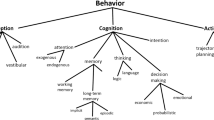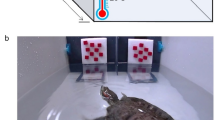Abstract
Behavioral changes in fighting and the development of dominance relationships were analyzed in groups of juvenile crayfish (Astacus astacus) using quantitative behavioral techniques. When individuals were placed into an aquarium, the number of agonistic challenges, their mean duration, and maximum intensity reached were high initially but then decreased steadily as the hierarchy developed. In all groups, linear hierarchies emerged which became increasingly stable over time. Winning influenced subsequent fighting behavior on two distinct time scales. In the short term, recent winners became progressively less likely to retreat. Second, individuals occupying dominant positions for days became increasingly likely to escalate to higher intensities early in the encounter. Both effects biased the outcome of future interactions such that winning enhanced further success and losing decreased an individual’s subsequent chances for dominance.
Similar content being viewed by others
Author information
Authors and Affiliations
Additional information
Received: 11 November 1999 / Revised: 1 March 2000 / Accepted: 3 May 2000
Rights and permissions
About this article
Cite this article
Goessmann, C., Hemelrijk, C. & Huber, R. The formation and maintenance of crayfish hierarchies: behavioral and self-structuring properties. Behav Ecol Sociobiol 48, 418–428 (2000). https://doi.org/10.1007/s002650000222
Issue Date:
DOI: https://doi.org/10.1007/s002650000222




